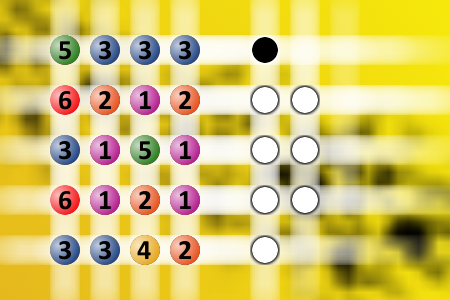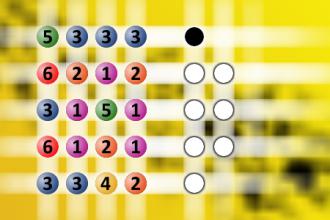What a winning combination?
The computer chose a secret code (sequence of 4 digits from 1 to 6). Your goal is to find that code. Black circles indicate the number of hits on the right spot. White circles indicate the number of hits on the wrong spot.Correct answers: 7
#brainteasers #mastermind

The bookie slowly counted out...
The bookie slowly counted out the money into the old lady's wrinkled hands.
"Lady," he said, "I just don't understand. However did you manage to pick the winner?"
The old lady patted her white locks in place. She looked a little bewildered. "Really," she said, "I don't know myself. I just stick a pin in the paper and, well, there it is."
The bookie took a deep breath. "That's all very well, lady," he cried. "But how on earth did you manage to pick four winners yesterday afternoon?"
"Oh," replied the old lady, "that was easy. I used a fork."
"Lady," he said, "I just don't understand. However did you manage to pick the winner?"
The old lady patted her white locks in place. She looked a little bewildered. "Really," she said, "I don't know myself. I just stick a pin in the paper and, well, there it is."
The bookie took a deep breath. "That's all very well, lady," he cried. "But how on earth did you manage to pick four winners yesterday afternoon?"
"Oh," replied the old lady, "that was easy. I used a fork."

